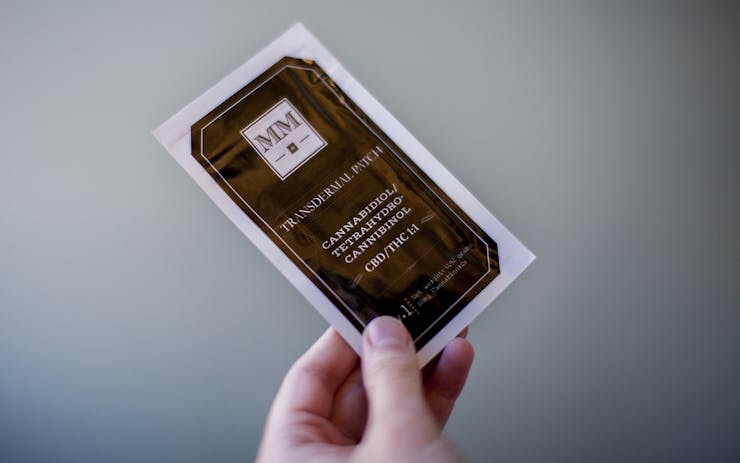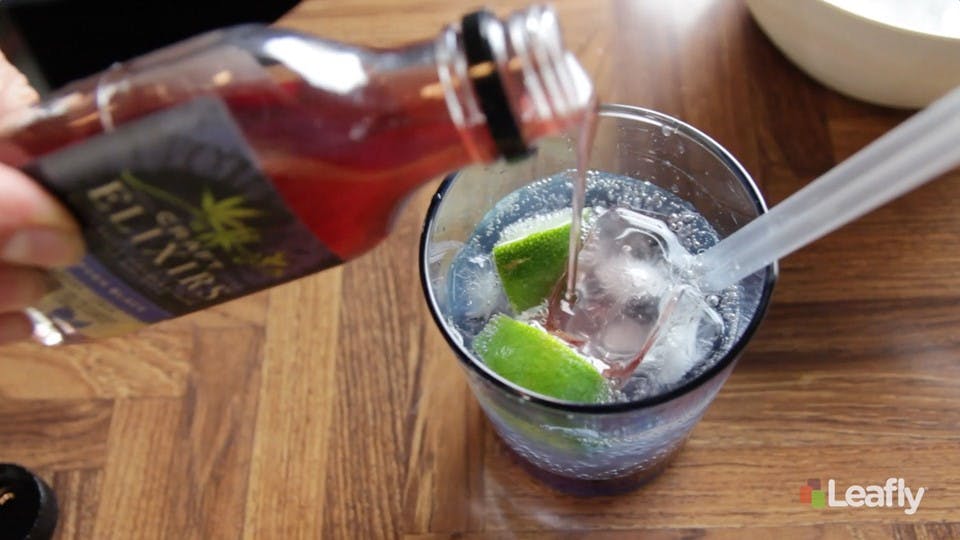Transdermal cannabis patches are a unique method of cannabis consumption. You needn’t inhale nor ingest to experience its effects. In fact, you don’t even need to touch a cannabis flower at all. All the work is done by a simple patch adhered to a veinous area of the body, thus allowing the cannabinoids to go to work entering the bloodstream for an effective and long-lasting response.
Patches are typically available in a variety of isolated cannabinoids, such as THC, CBD, CBN, THCA, and split ratios such as 1:1 CBD:THC. Consumers can choose a patch based on the desired effects. For example, a person may opt for CBD if they are seeking to reduce inflammation, while another may opt for CBN if they are suffering from insomnia. Both cannabinoids offer a wide range of medicinal effects in addition to these examples.
Patches can offer all day or night relief, with a slow release of the chosen cannabinoid throughout their period of use. For some, this is an appealing alternative to smoking or vaporizing, which deliver effects that subside relatively quickly. In addition to this convenience, the discretion of the patch is seen as an added benefit by some. The patch can be adhered out of sight, allowing for medical use anywhere, anytime.
How do transdermal cannabis patches work?
Transdermal patches are certainly unique and have staked out their own popular niche in the market, but how exactly do they work?
Dr. Noel Palmer, chief scientist of Mary’s Medicinals and one of the industry’s most well-known patch developers, took the time to speak with Leafly about the company’s renowned patches and the science behind the medicine. Dr. Palmer is an award-winning laboratory scientist with a specialization in plant properties. He joined Mary’s team in March of 2015.

How are transdermal patches able to deliver cannabinoids into the bloodstream?
“There are two effects really going on. You want to create a patch where the cannabinoids don’t really like living in the patch, so they want to get away. So you try to create conditions for them to migrate from the patch into a place that might be more favorable. In the transdermal scientific world we use what are called permeation enhancers and carriers; those are general words that describe additives put in patches to help them transfer into the blood.
With all transdermal drugs there’s always some kind of carrier, a permeation enhancer, and that’s because the epidermis is insanely effective at keeping out contaminants, dangerous toxins – so what we’re trying to do is bypass this protective layer we have. The balancing act with any transdermal product is finding a mixture that’ll work where it’s stable enough to be an effective product, but it’s unstable enough that the cannabinoid will want to migrate into the blood and that environment with the permeation enhancer.”
In your opinion, what is the benefit of using a cannabis patch?
“The reason why you use a patch is it’s direct to the bloodstream, it’s a slow timed release, and it’s a fairly benign way to administer a drug for someone who may be adverse to taking a pill, to vaporizing, to those kinds of things.
Especially with THC, when ingested, it goes through your liver and all of a sudden you get these THC metabolites floating around in the body that are totally different pharmacologically. When you eat [cannabis], you get a spike of 11-Hydroxy-THC – which is actually very strong and might be stronger than the Delta-9. This may be why people are having these kinds of psychedelic experiences when they eat cannabis.
But with the patch, in theory, you don’t get that because you’re going direct to the bloodstream, so you’re not going to get these kind of secondary metabolites that you would when you ingest. So, it would be more akin to a very, very slow smoke, and that’s with any patch – not just a THC patch. I think the patches offers a very safe way for people who might not want to try cannabis [traditionally] to try it.”
Are there specific strains that you default to when isolating cannabinoids for the patches?
“We honestly just find the cleanest, best material we can. “
Dr. Palmer went on to explain that after alcohol extraction and molecular dissolution, all that’s left is the cannabinoids – no terpenes or other individual markers of strains. Therefore, purity of the strain becomes more important than factors such as indica, sativa, or terpene profiles.
Do you have a favorite cannabinoid to work with?
“To be totally honest it’s most satisfying to get a large lot of CBN because you have to go through so many different steps to get to it; having a kilogram of like 80% CBN, I mean that’s pretty rad. I don’t know if any other companies are really doing that right now, it’s kind of a unique cannabinoid to play with.
It’s really cool because it will still have some of the psychoactive activity similar to THC, but as far as body effects – more peripheral effects – it’s very different. I’m not a physician, so I can’t speak to that, but just knowing it’s a different chemical, it’s got a completely different pharmacological activity – that’s very cool. Also, knowing that no one else is really digging in right now, I think that’s neat.
“To me, cannabis is great, THC is boring, CBD is boring,” Dr. Palmer laughs. “I’m more interested in finding these other chemotypes, I’m really interested in playing with a CBG chemotype, I really want to be able to play with a THCV chemotype.”
Dr. Palmer’s interview certainly provides a look behind the scenes at the minds developing Mary’s patches. On the other side of the spectrum, personal stories from consumers provide anecdotal insight into what it’s like to use a cannabis patch.
Shop highly rated dispensaries near you
Showing you dispensaries nearPersonally speaking, I recently used both a CBD and CBN patch in Colorado. I found the CBD patch effectively provided inflammation relief for a joint disorder over a 12-hour period. The effects were soothing. Conversely, the CBN patch provided a much more overt effect. Taken at night a few hours before bed, the patch acted as a strong appetite suppressant and then as a very effective sleep aid, providing a deeply restful night’s sleep with a refreshed feeling upon waking.
Cannabis patches are certainly unique in the world of medicinal and recreational products, with a myriad of benefits to their use. From discretion to quick-acting and long-lasting effects, or honing in on the specific benefits of a particular cannabinoid, patches are becoming a valuable alternative to traditional consumption methods in legal markets across the U.S.







